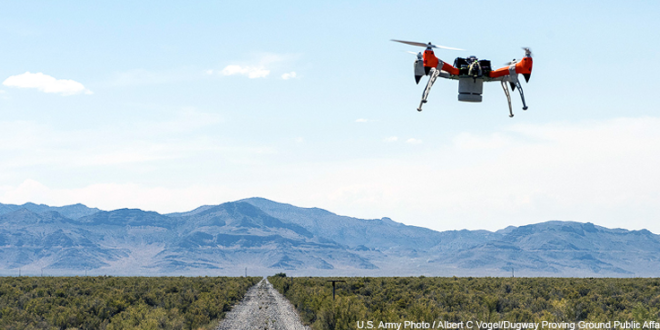Unmanned Systems
Army looks to put ground-penetrating radar on drones
The Army’s Engineer Research and Development Center wants to put radar systems that identify environmental phenomena on unmanned aerial and ground vehicles so they can be used to survey previously inaccessible locations and cover more territory from the air.
Currently, ground-penetrating radar systems are large arrays mounted on the front of military vehicles to detect improvised explosive devices. Smaller commercial versions exist as well.
Ground penetrating radar has non-military uses as well; it is currently being used to find cracks and corrosion in pavement. The Robotics Assisted Bridge Inspection Tool – a Volkswagen Beetle-sized robotic machine has been tested by the Federal Highway Administration’s Office of Bridges and Structures. It has also been used in Haymarket, Va., to assess the condition of bridge decks.
Ground-penetrating radar devices have not yet been mounted on small unmanned systems, however, primarily because of size, weight and power constraints. The Army wants the radar-on-a-chip technology to deliver a digital map that shows the shapes, sizes and features of objects in the environment.
Contractors will be asked to collect data on inert unexploded ordinance (UXO), synthetic tracer material and flora and fauna using radar on a chip operating between 100MHz and 5GHz attached to an unmanned system. The objects of interest may be buried, unburied or partially buried in a 20-square-meter area at the Army’s Engineer Research and Development Center in Vicksburg, Miss., consisting of flat, sloping, underground, indoor and vertical terrain.
The success of the program would alleviate some of the limitations of traditional ground-penetrating radar technology for UXO detection, improve mapping of tracer material and better identify flora and fauna.
In 2018, the Army Research Lab worked with researchers at the University of Delaware on a system that combines traditional cameras, thermal infrared sensing and ground-penetrating radar that probes the surrounding environment, spotting objects buried up to three to five inches. The multi-camera system could be deployed on autonomous vehicles, drones or robots before troops are sent into an area.
More information on the Army’s new effort is online here.
About the Author
Susan Miller is executive editor at GCN.
Over a career spent in tech media, Miller has worked in editorial, print production and online, starting on the copy desk at IDG’s ComputerWorld, moving to print production for Federal Computer Week and later helping launch websites and email newsletter delivery for FCW. After a turn at Virginia’s Center for Innovative Technology, where she worked to promote technology-based economic development, she rejoined what was to become 1105 Media in 2004, eventually managing content and production for all the company’s government-focused websites. Miller shifted back to editorial in 2012, when she began working with GCN.
Miller has a BA and MA from West Chester University and did Ph.D. work in English at the University of Delaware.
Connect with Susan at [email protected] or @sjaymiller.
https://defensesystems.com/articles/2019/03/20/army-drone-radar.aspx
 Unmanned Aerial Vehicle The latest drone news
Unmanned Aerial Vehicle The latest drone news




